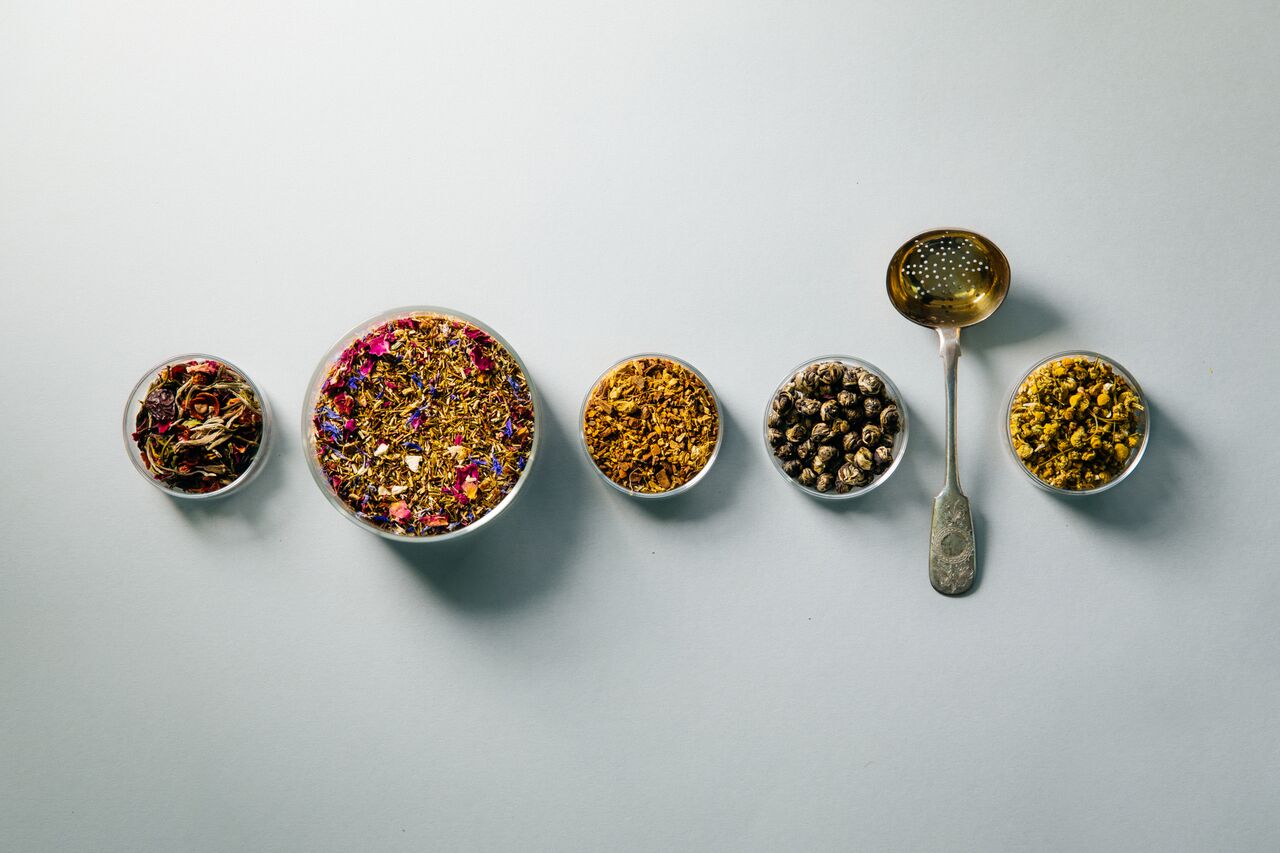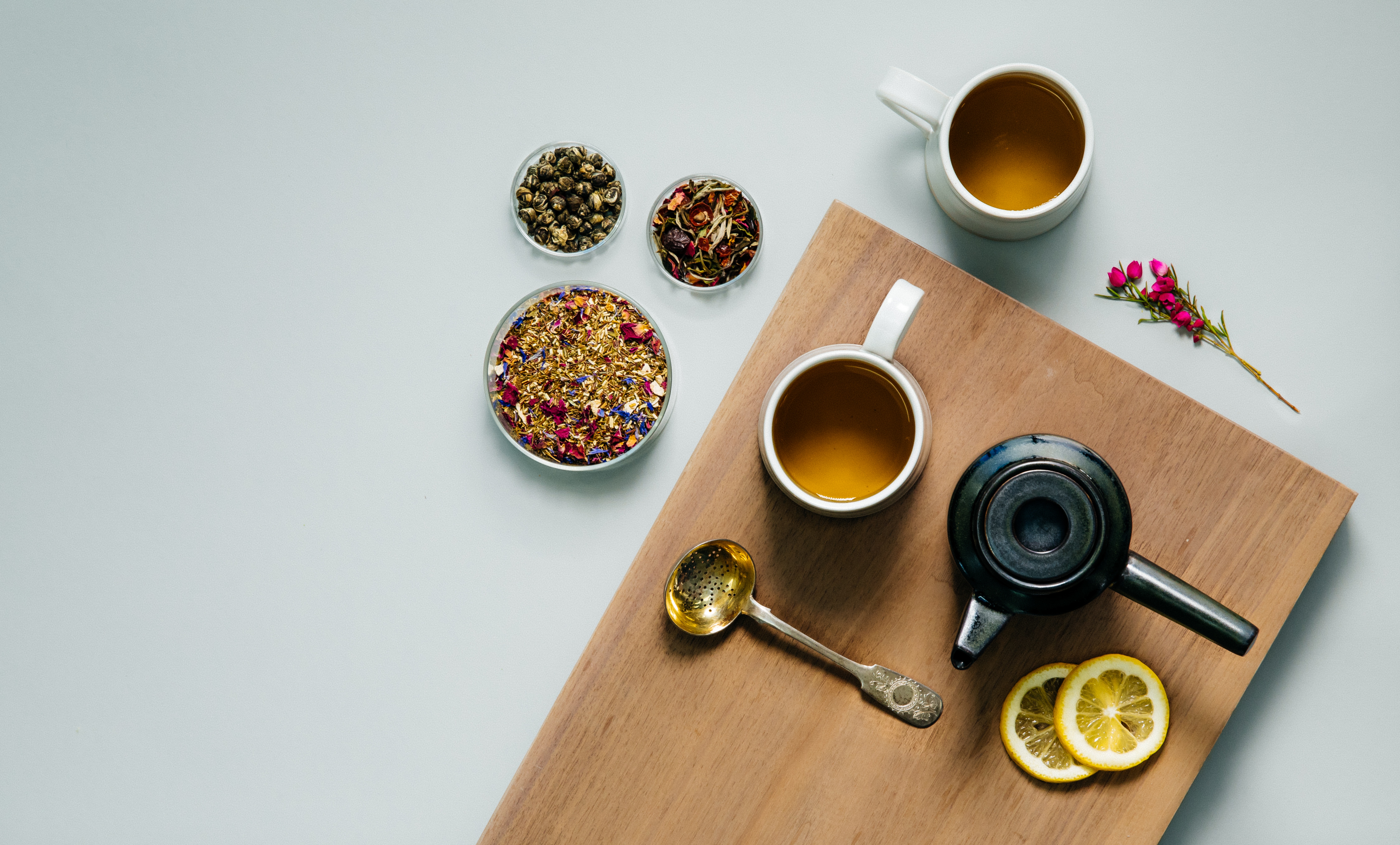Herbal teas are becoming more and more important as the growth of herbs have gained in popularity. According to the American Botanical Council, sales of herbal teas have grown by 19% over the last few years. Tea suppliers nationwide are looking to capitalize on this trend by producing tasty herbal blends. Art of Tea has been producing herbal teas for many years and is poised to help our customers capitalize on this trend.

The term “herbal tea” is more of a colloquialism today, to mean, plant material steeped in hot water like “real” tea (Camellia sinensis). Herbal teas, for the most part, do not contain any Camellia sinensis tea. This category of tea, is sometimes referred to as tisanes or herbal infusions, so as not to confuse consumers. Like tea, these infusions can be served hot or iced.
Wikipedia states, “Tisane or herbal tea is any non-caffeinated beverage made from the infusion or decoction of herbs, spices, or other plant material in hot water.” However, this is not totally accurate. For decades, tea professionals have sworn that herbals are caffeine free. But, in the last few years, a group of caffeinated herbals have gained market share, these include the herbals yerba mate, guayusa, and yaupon.
Nearly every part of a plant can be used for herbal teas:
- Leaves: peppermint, spearmint, rooibos
- Fruits: rosehips, apple
- Petals: jasmine, safflower, hibiscus, chrysanthemum
- Herbs: lemon verbena, basil
- Bark: cinnamon, willow
- Seeds: anise, fennel, cardamom
- Pollen: chamomile flower pollen
- Grass: lemon grass, oat straw
- Peels: orange, lemon
- Nuts: almonds, cola, nutmeg
- Roots: ginger, licorice
We use several different herbal ingredients in our herbal teas. Last week, we introduced you to several of these ingredients. What follows is an introduction to even more.
PEPPERMINT
Latin Name: Mentha piperita
Origin: USA, Poland, Bulgaria, Egypt, Turkey, Germany, Yugoslavia
Description: The plant is a strongly aromatic annual that grows up to 3 feet. The leaf edges are serrated and the leaf stem is short and square. Generally, the leaves are 2 inches or more in length and about an inch wide with a smooth surface.
Part Used: Leaves
Color: Green to dark brown-green
Odor: Aromatic, menthol
Taste: Aromatic, minty, cooling, refreshing
ROOIBOS
Latin Name: Aspalathus linearis
Origin: South Africa
Description: The plant is a shrub with many thin branches and thin, needle-like, green leaves. Red rooibos is bruised by machine to ensure oxidation that develops the characteristic color and flavor, not unlike black tea. Green rooibos is not bruised, so oxidation essentially does not occur, similar to green tea.
Part Used: Stalks and leaves
Color: Reddish brown to greenish brown
Odor: Sweet, spicy
Taste: Earthy, mild, minerally
ROSEHIPS
Latin Name: Rosa (with various species)
Origin: Asia, Europe, North America, Africa, Australia, South America
Description: Also known as rose haw or rose hep, it is the fruit of the rose plant that is typically red-to-orange, but ranges from dark purple to black in some species. Rose hips begin to form after successful pollination of flowers in the spring or early summer, and ripen in late summer through autumn.
Part Used: Fruit
Color: Clear Reddish
Odor: Sweet berry floral
Taste: Sweet, zesty, slightly bitter floral
SPEARMINT
Latin Name: Menta spicata
Origin: USA, Europe, Asia
Description: This plant is an herbaceous rhizomatous perennial plant, with variably hairless, to hairy stems and foliage, and a wide-spreading fleshy underground rhizome. Spearmint produces flowers in slender spikes, each flower being pink or white. The name “spear” mint derives from the pointed leaf tips.
Part Used: Leaves
Color: Green to dark brown-green
Odor: Aromatic, sweet
Taste: Sweet, aromatic, minty, refreshing
TOASTED RICE
Latin Name: Oryza sativa
Origin: Asia
Description: Used in Genmaicha (brown rice tea) from Japan. It is sometimes colloquially referred to as popcorn tea, since a few grains of the rice pop during the roasting process to resemble popcorn.
Part Used: Seed
Color: Pale brown
Odor: Toasty, roasted
Taste: Toasted grain
TULSI (HOLY BASIL)
Latin Name: Ocimum sanctum, various other species
Origin: India and throughout Southeast Asia
Description: Its history goes back as far as tea’s does. Hindus view tulsi as a goddess in the form of a plant. In India, it is referred to as the Queen of Herbs due to its healing powers. A commonly used herb in Ayurveda. The most common varieties are rama, vana, and Krishna, each having a moderately different taste. An aromatic plant of the Lamiaceae family with green or purple leaves, that are strongly scented.
Part Used: Leaf
Color: golden brown
Odor: Vana = forest herbs, Krishan = peppery, Rama = herbaceous
Taste: Vana has hints of lemony citrus, Krishan has slightly spicy and mint-like qualities, Rama
has a cooling mellow flavor
YERBA MATE
Latin Name: Ilex paraguariensis
Origin: Argentina, Paraguay, Uruguay, Brazil
Description: Begins as a shrub, but can grow into a tree over 50 feet tall. Yerba Mate is part of the holly genus and its leaves contain caffeine. A drink using the leaves of the plant is referred to as mate. Traditionally made in a gourd and consumed through a metal straw. Medium bodied medicinal drink of the Guarani Indians of South America. A healthy stimulating tisane from the Amazon Rainforest.
Part Used: Leaf
Color: Golden Brown
Odor: Smoky, Herbaceous
Taste: Smoky, Herbaceous, Notes of Cooked Vegetables
Art of Tea is an award winning purveyor of specialty and organic teas, based in Los Angeles, CA.
If you found this article helpful, please share it with coworkers, colleagues, and fellow lovers of tea.

